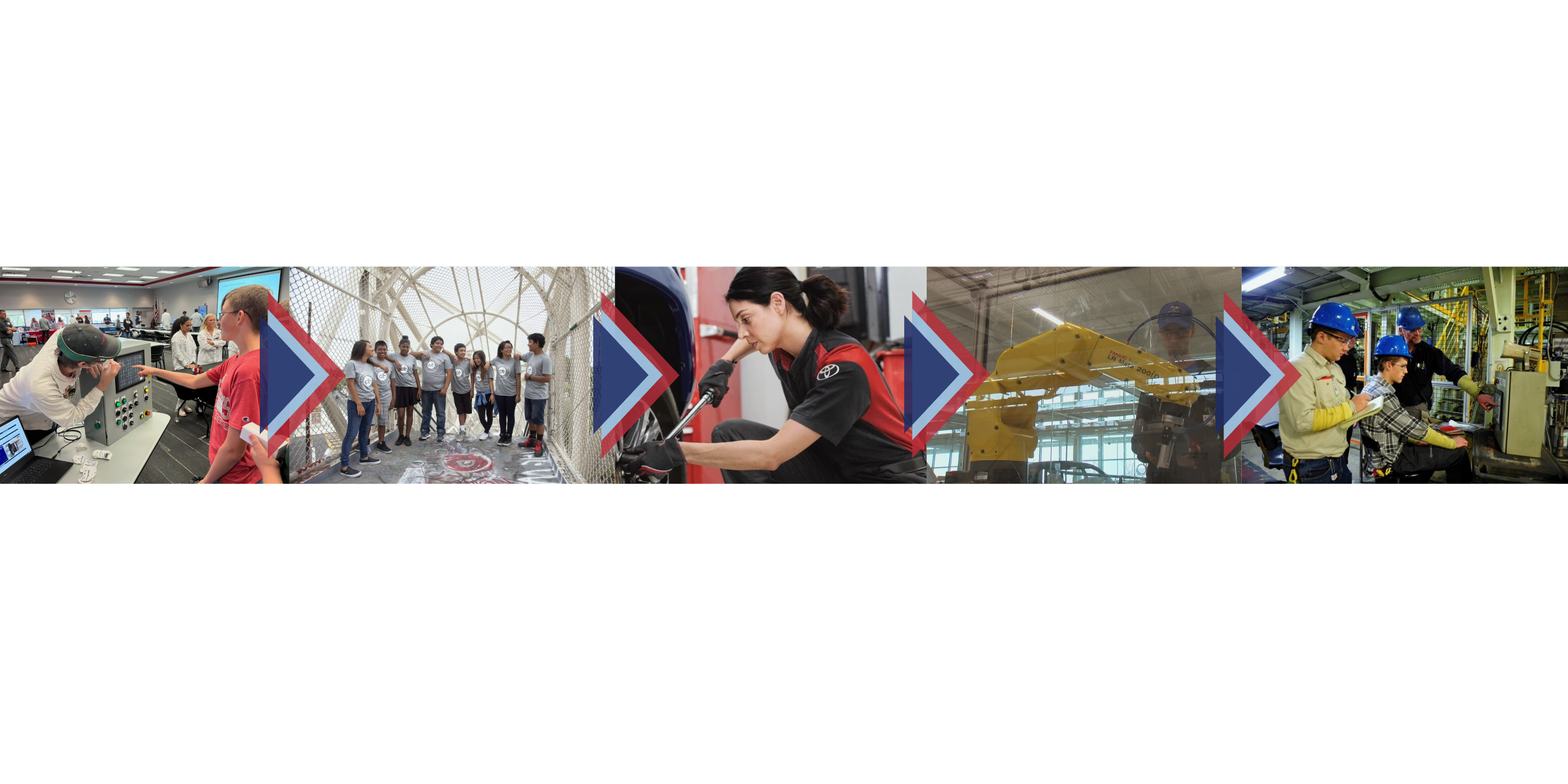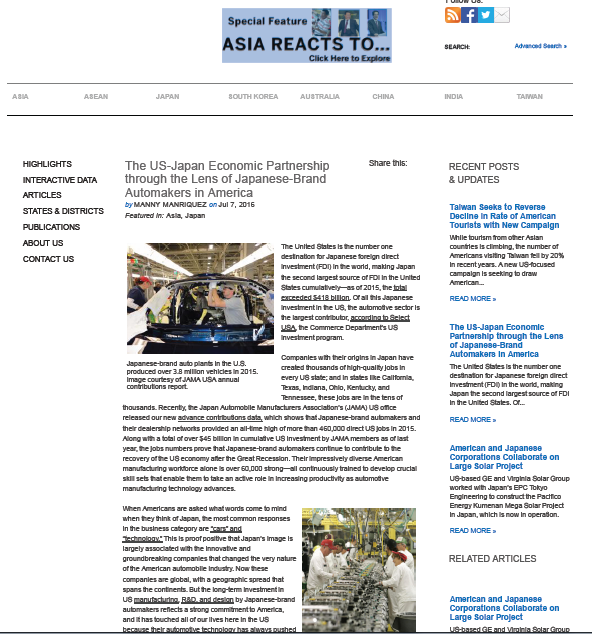East-West Center: The US-Japan Economic Partnership through the Lens of Japanese-Brand Automakers in America
By Manny Manriquez
July 7, 2016
The United States is the number one destination for Japanese foreign direct investment (FDI) in the world, making Japan the second largest source of FDI in the United States cumulatively—as of 2015, the total exceeded $418 billion. Of all this Japanese investment in the US, the automotive sector is the largest contributor, according to Select USA, the Commerce Department’s US investment program.
Companies with their origins in Japan have created thousands of high-quality jobs in every US state; and in states like California, Texas, Indiana, Ohio, Kentucky, and Tennessee, these jobs are in the tens of thousands. Recently, the Japan Automobile Manufacturers Association’s (JAMA) US office released our new advance contributions data, which shows that Japanese-brand automakers and their dealership networks provided an all-time high of more than 460,000 direct US jobs in 2015. Along with a total of over $45 billion in cumulative US investment by JAMA members as of last year, the jobs numbers prove that Japanese-brand automakers continue to contribute to the recovery of the US economy after the Great Recession. Their impressively diverse American manufacturing workforce alone is over 60,000 strong—all continuously trained to develop crucial skill sets that enable them to take an active role in increasing productivity as automotive manufacturing technology advances.
When Americans are asked what words come to mind when they think of Japan, the most common responses in the business category are “cars” and “technology.” This is proof positive that Japan’s image is largely associated with the innovative and groundbreaking companies that changed the very nature of the American automobile industry. Now these companies are global, with a geographic spread that spans the continents. But the long-term investment in US manufacturing, R&D, and design by Japanese-brand automakers reflects a strong commitment to America, and it has touched all of our lives here in the US because their automotive technology has always pushed innovation to its very limits, bringing healthy competition to the American auto industry and driving up the standards of automotive quality, safety, and fuel efficiency.
I have had the opportunity to visit JAMA member company manufacturing facilities in both the US and Japan. Despite the geographic distance between our two countries, I am struck by the nearly identical manufacturing practices that they employ, but even more so, I am impressed by the focus and purpose with which the workers on the line go about their business. They are clearly very proud of the outstanding vehicles they build. And I am likewise proud of the way our member companies involve their staff in the process of continuous improvement, known as kaizen, as well as their ceaseless attention to quality and the highest manufacturing standards. I see the US-Japan relationship through this lens, as well as through the many other dimensions that are inherent in the relationship. With the facts on our side, we can hold up examples like this and set the record straight about the true nature of the US-Japan relationship and the direct benefits it brings to millions of families all across America.
The US-Japan economic relationship around the automotive sector is part of an overall partnership that is built on trust, collaboration, and shared core values. Together, our two countries have helped to shape a global economic order based on equitable and transparent norms and rules, bolstered by strong diplomatic ties. As General Director of JAMA’s US office, I am able to witness the widespread benefits of this partnership on a daily basis—from ongoing people-to-people exchanges to advancing global trade and investment.
Compared to the years of trade-related tension in the 1980’s and 90’s, a strong majority of Americans now see Japan as a fair trading partner, according to a Pew Research Center survey published in April 2015. This perception is shaped by the tangible benefits that the economic partnership brings to the peoples of both countries—the exchange and provision of high-quality goods and services. In fact, the US and Japan are among each other’s top four trading partners, with each US state exporting nearly $100 million or more in goods and services to Japan annually. The successful conclusion of the US-Japan negotiations under the Trans-Pacific Partnership (TPP) is indicative of our commitment to collaborative leadership and shared economic rule-building, and Japan’s ever-growing FDI contributions in the US speak to the confidence Japanese businesses have in the vibrancy of the US economy. JAMA members’ commitment to building, developing and designing vehicles in America are a crucial element of that confidence and commitment.
Manny Manriquez is General Director of the Japan Automobile Manufacturers Association’s U.S. Office (located in Washington, DC). For more information on his background and work with JAMA, see his LinkedIn profile. Views expressed in this commentary are his own.
Via the East-West Center
Click to view PDF:


